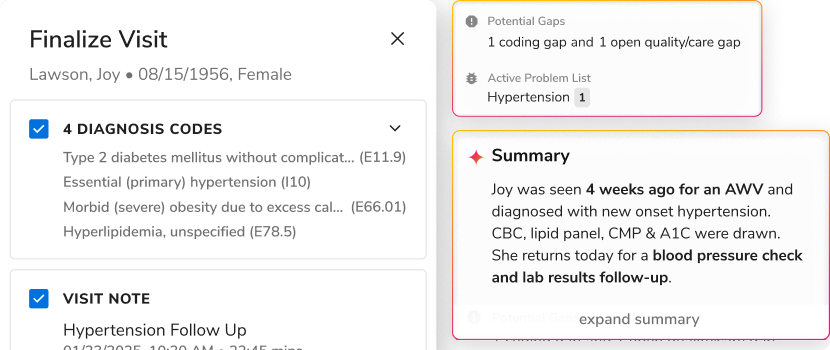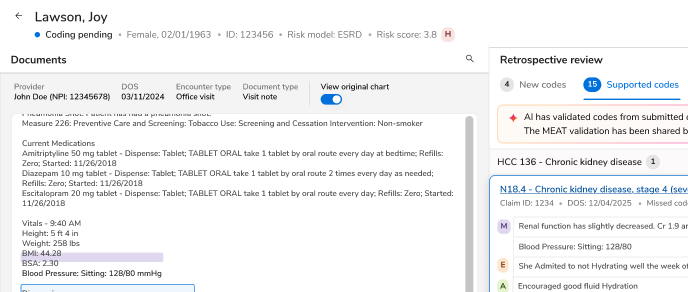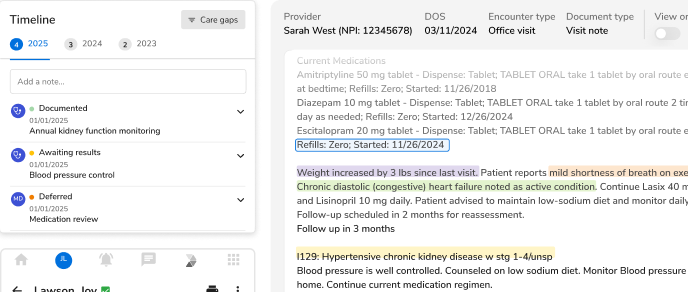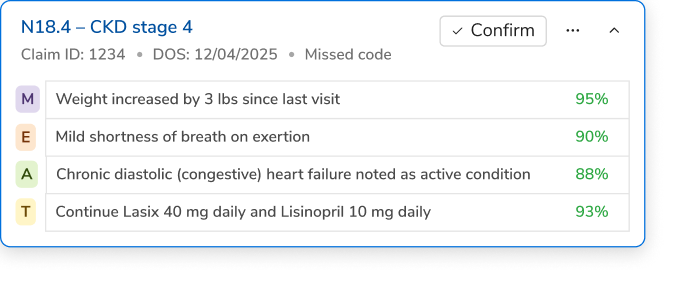Comprehensive Primary Care Plus 101: The Dawn of Preventive Care

Today, the healthcare services in the US are costlier than ever. Over $10,000 is being spent on one citizen in the US as healthcare charges, but is it reciprocating the kind of health that was expected? Are we even close? Evidently, spending money won’t lead us anywhere unless we are moving in the right direction. It is important that we plot a roadmap to personalized care to get better generalized results.
What is Comprehensive Primary Care ?
Centers for Medicare and Medicaid Services (CMS) has continually tried to bring innovations in the healthcare industry; however, their effectiveness is subject to implementation and support from various members of the healthcare community. One such innovation is Comprehensive Primary Care (CPC) which was started in October 2012 as a three-year model and is supposed to end this year in December. The primary focus of CPC model was to enhance the quality of care being delivered by implementing coordinated patient-centric care. For this, Comprehensive Primary Care had mentioned five functions (explained below) that every practice in it had to fulfill. The similar five functions are in CPC+ but enforced to greater depths.
What is Comprehensive Primary Care Plus ?
Comprehensive Primary Care Plus will build on the foundation of CPC by integrating the important lessons learned from it. This five-year model will be even more comprehensive and elaborate to bring drastic changes in healthcare industry. It will have 2,500 practices as compared to 500 in CPC, 20,000 clinicians and 25 million patients involved. CPC+ is much more than the five functions of CPC; it has four basic drivers now that will change the care delivery process.
Driver 1: Comprehensive Care
CPC+ has been divided into Track 1 and Track 2. Just like CPC, it has five elements in it, but Track 2 will enforce them more effectively. The items of the driver one are:
- Access and Continuity: In this function, both Track 1 and Track 2 practices are required to:
- Offer patients the 24/7 access to their practice.
- Offer multi-point access to patients.
- Patients should be able to access their real-time EHR.
- Every patient must be assigned to a care team.
Besides these, Track 2 practices are required to offer more care options such as telephonic visits, e-visits, home visits and alternate location visit.
- Care Management: Practices in CPC+ are required to do following things under Care Management:
- Assign care teams to various patients
- Stratify the population by risk
- Identify the kind of care that’ll benefit patients, post which, provide that care
- Provide self-management support, medication management, and behavioral health.
Track 2 practices should be capable enough to offer additional ability that can handle complex patients with multiple chronic conditions or other delicate conditions.
- Comprehensiveness and Coordination: Practices are required to understand their patients better by knowing the medical neighborhoods of patients where they seek care. Practices in Track 2 are required to assess the patients’ psychological needs, patient support inventories and referrals.
- Patient/Caregiver Engagement: Practices are expected to engage the patients and their families and involve them in shared decision making by using various technical aids such as motivational interviews or informative videos.
- Planned Care and Population Health: Practices should be capable of providing timely care as needed. They should also manage the chronic conditions on the basis of past evidences.
Driver 2: Use of enhanced, accountable payment
Practices are required to develop analytic capabilities, project revenues, perform different budgeting exercises, utilize the care management fee to deliver comprehensive care and identify the areas where there is a scope for improvement.
Driver 3: Continuous Data Driven Improvement
Practices need to measure the quality of care being offered at practice, panel or care team level. Besides this, they should develop skills in change management and implement new workflow ideas on the basis of insights generated from the various data-driven approaches.
Driver 4: Optimal use of HIT
In both the tracks of Comprehensive Primary Care Plus, practices are required to have certified Health IT. The practices are supposed to have remote access to EHRs to ensure a 24/7 access.
Relationship with Vendors
For developing the necessary Health IT, it is required that Vendors and Practices work together. A vendor that supports an existing practice has to enter into a Memorandum of Understanding (MOU) with CMS and also provide their letter of support to the practice. A vendor could also be a part of the program voluntarily. Vendors won’t receive direct payments from CMS. They are expected to be a part of learning activities as mentioned in the guide by CMS.
How practices get paid in CPC+ ?
Comprehensive Primary Care Plus has introduced three ways by which program will be supported.
- Care Management Fee: On the basis of the risk level of patients (according to HCC Coding), per beneficiary per month (PBPM) stipend will be paid which should be used for staffing, technology and various training exercises under CPC+.
- Performance-based incentive payment: Based on the quality of care provided the practices will get paid. They will be paid prospectively by CPC+ and incentives will be given after retrospective reconciliation of the quality of care delivered and cost incurred. The incentives will depend on measures such as patient experience, clinical quality measures, and utilization measures that play an important role in driving the cost of care.
- Medicare Physician Fee Schedule: Practices in Track 1 will continue the fee-for-services billing and will receive money from Medicare in the similar fashion. However, Track 2 payments will be under Comprehensive Primary Care Payments, which reduces the amount paid in FFS but with an increased upfront payment.
Advantages of CPC+
There are so many things that will in better shape once CPC+ is enforced. High-risk patients will get focused proactive care, practices will be in a comfortable position to take steps that will fulfill the mental and physical needs of patients and their families, increased chances of timely follow-up and the quality of care is analyzed with the data made available and continually worked upon for improvements. With CPC+ patients get to access the preferred care with enhanced in-person hours accompanied by 24/7 access via telephone and online tools.
Role of Technology in CPC+
The success of CPC+ is directly dependent on the technological advancements and their applicability. The most important task that CPC+ will have to accomplish is improving the quality of care and for that it is imperative that appropriate data is available to assess the current quality standards. Besides this, technology will help in:
- Tracking all the patients
- Monitoring results
- Planning timely interventions on the basis of risk scores.
- Performing predictive analytics to discover cost efficient methods.
- Designing apt planning tools.
- Enhanced Care Coordination
Takeaways and the Road Ahead
The model has the capability to bring in force one of the most important aspects of healthcare i.e. preventive care. It drives the focus of practices towards better primary care and incentivizes practices for excelling at that.
There were only 500 practices in CPC, but CPC+ will have five times more practices in it and a lot more patients whose needs will be catered to. The sign is clear that the predecessor model has not only set the stage for improvements but also has provided us with innumerable opportunities, and we have to grab them with both hands. With CPC+, a stronger bond between technology and health care will be forged, one where doctors can use their acumen to revolutionize the healthcare with technological advancements.
For more updates , Subscribe
If you want to see our efforts in the area , schedule a quick demo
Join us at NAACOS Fall Conference 2016 Booth #40

.png)





.png)









.svg)
.svg)

.svg)

